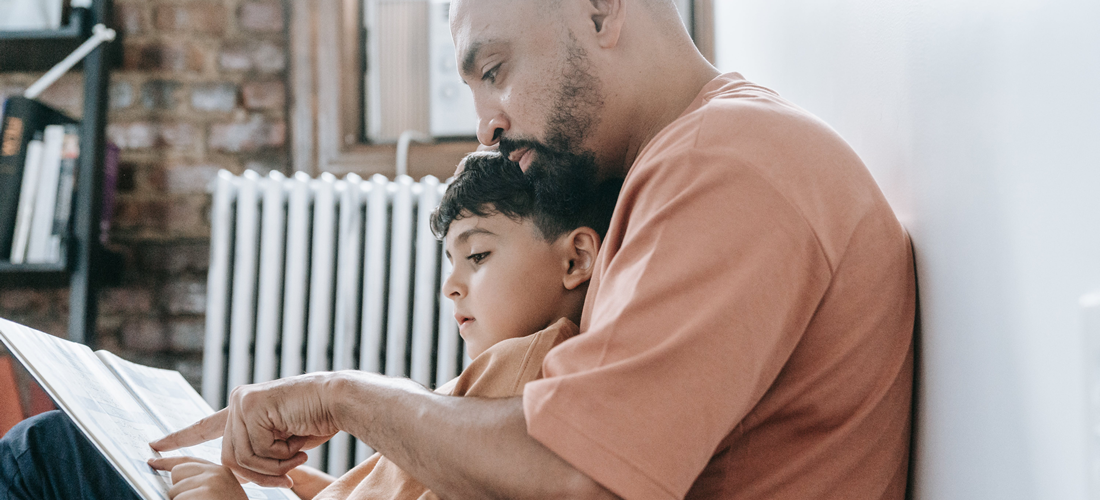Pandemic learning loss, a significant setback triggered by the ongoing global health crisis, has gravely impacted children’s education. When schools shut down and switched to virtual learning, many students faced difficulties adapting to the new mode of instruction. The lack of personal interaction, coupled with the challenges of concentrating in a home environment, led to a decrease in the general learning curve.
Unfortunately, this resulted in a “learning loss” – a gap in academic skills and knowledge that has been particularly hard for kids to overcome. The long-term implications could mean academic delays, decreased college readiness, and lower future earnings potential. As parents, understanding this issue is the first step to helping our kids recover and bounce back stronger.
Parental involvement plays a pivotal role in helping kids overcome pandemic learning loss. When parents engage actively in their child’s education, it fosters a sense of responsibility and motivation in the child, making learning more effective.
Parents can provide a customized learning environment at home, tailored to the child’s individual needs and learning style. This personalized approach can help bridge the learning gap faster. However, parental involvement goes beyond just academic support. Emotional support, understanding, and patience can significantly aid in alleviating the stress and anxiety children might be experiencing. Remember, it’s not about putting additional pressure on the child, but creating a supportive, conducive atmosphere for learning and growth.
- Understanding Pandemic Learning Loss
- Assessing Your Child's Learning Needs
- Creating a Supportive Learning Environment
- Setting Realistic Academic Goals
- Incorporating Educational Activities into Daily Life
- Leveraging Online Resources
- Fostering Social and Emotional Well-being
- Seeking Additional Support
- Staying Involved in Your Child's Education
- Final Thoughts
Understanding Pandemic Learning Loss
“Pandemic learning loss” can be defined as the academic setbacks students experience due to disruptions in their education during the COVID-19 pandemic. Several factors contribute to this issue:
- Switch to virtual learning: Not all students adapt well to online learning. Some may struggle with technology, while others may find it hard to focus without the structure and routine of a traditional classroom.
- Limited social interaction: The lack of face-to-face contact with teachers and peers can affect a child’s motivation and engagement, leading to a decline in academic performance.
- Home environment: Not all children have a conducive environment for learning at home. Factors such as inadequate workspace, lack of quiet, or insufficient parental support can affect a student’s ability to learn effectively.
- Increased stress and anxiety: The pandemic has caused a rise in stress and anxiety levels among children, which can negatively impact their concentration and learning retention.
Key Areas Affected
Academic Impact
The most tangible area of impact is undoubtedly academic. With the sudden shift to remote learning, many students struggled to keep pace. The lack of personalized attention and immediate feedback, which is often available in a traditional classroom setting, created a gap in learning. Subjects that demand hands-on learning and practical applications, such as science and mathematics, were particularly affected.
Social Impact
Social interactions at school play a pivotal role in a child’s development. They learn vital skills like cooperation, empathy, problem-solving, and conflict resolution. Limited or non-existent interaction with peers due to pandemic-induced isolation has deprived students of these valuable experiences, leading to issues like reduced social skills and increased feelings of loneliness.
Emotional Impact
Lastly, the emotional toll of the pandemic on students cannot be undermined. Increased stress and anxiety levels, triggered by the uncertainty and constant changes in their routine, have impacted their mental well-being. This emotional turmoil has the potential to hinder their concentration and overall learning experience. Understanding and addressing these emotional impacts are crucial for helping kids recover from pandemic learning loss.
Identifying Signs of Learning Loss in Children
Recognizing the signs of learning loss in children is a key step towards helping them recover. Below are some indicators parents, teachers, and caregivers can look out for:
- Falling Grades: One of the most evident signs of learning loss is a noticeable decline in a child’s academic performance. This could be a drop in their grades, difficulty in understanding basic concepts, or struggling with subjects they once excelled at.
- Loss of Interest in Learning: If a child shows a decreased interest in school activities, homework, or even their favorite subjects, it might be a sign of learning loss. Lack of motivation and engagement in learning could stem from the frustration of not being able to keep up with the academic content.
- Difficulty Concentrating: A sudden or increased difficulty in focusing on tasks might indicate a cognitive impact due to the disruption in their regular learning routine. This might manifest as restlessness, problems with attention span, or an inability to complete tasks.
- Changes in Behavior: Emotional or behavioral changes such as increased anxiety, irritability, or withdrawal could be indicative of learning loss. Children might express feelings of frustration or show a lack of confidence in their abilities, which can stem from struggling academically.
- Struggling with Independent Learning: If a child is having trouble following instructions, organizing their thoughts, or expressing them clearly, it might be due to learning loss. These skills are often developed and reinforced in a traditional classroom setting, and their absence could be a symptom of pandemic learning loss.
Awareness of these signs is the first step. To help kids recover from pandemic learning loss, it’s important to respond with empathy, patience, and strategic intervention plans. It’s a challenging journey, but with the right support and resources, children can bounce back stronger.
Assessing Your Child’s Learning Needs
Here are some key ways to assess your child’s needs related to pandemic learning loss:
1. Review grade reports and test scores
Look at recent progress reports, report cards, and standardized test scores. Are there dips in certain subjects? Have grades fallen compared to past terms? This data can pinpoint where your child is struggling.
2. Meet with teachers
Schedule a meeting with your child’s teacher(s), either in-person or virtually. Ask them to identify academic gaps and areas where your child is behind grade-level expectations. Inquire about social-emotional impacts too.
3. Observe your child’s skills
Watch your child study and complete homework. Are they struggling more than in the past? Do they seem frustrated with topics they used to understand? Take note of skills needing improvement.
4. Use diagnostic assessments
Have your child take diagnostic tests in reading or math. These provide detailed data on the specific skills and concepts your child hasn’t mastered yet. Free online options are available.
5. Consider evaluations
For significant learning regression, have your child evaluated for learning disabilities. Evaluations can diagnose issues that the pandemic may have exacerbated.
6. Assess their wellbeing
Check in on their general mental health. Have there been changes in motivation, concentration, anxiety levels? Getting back on track involves addressing wellbeing.
7. Track progress
As you support your child’s learning recovery, continuously track progress through informal checks and formal assessments. This shows if interventions are working or if adjustments are needed.
The pandemic has disrupted learning for countless students. While the effects vary child-to-child, thorough assessments illuminate each child’s unique needs for a tailored recovery approach. Tracking progress along the way is key to success.
Creating a Supportive Learning Environment
Creating a supportive learning environment is pivotal to helping kids recover from pandemic learning loss. As parents, fostering a space that encourages exploration, curiosity, and a love for learning is key. This can start with creating a quiet, comfortable study area free of distractions, equipped with necessary learning materials.
Next, establish a consistent routine for learning. This structure can help children anticipate learning activities and transition between tasks more efficiently. Incorporate breaks for relaxation and physical activity to keep your child energized and engaged. Consider using educational technologies that can make learning interactive and fun, all while supplementing what they’re learning in school.
Additionally, keep the lines of communication open. Encourage your child to express their concerns or difficulties in learning. Don’t forget to offer words of affirmation and celebrate their successes, no matter how small, to boost their confidence. Remember, recovery from pandemic learning loss is not a race. Every child learns at their own pace, and patience and understanding are crucial during this process.
Setting Realistic Academic Goals
Setting realistic academic goals is integral to helping kids recover from pandemic learning loss. These goals serve as a roadmap, providing a clear direction and purpose for your child’s learning journey. They enable you to gauge your child’s progress, identify areas of strength and improvement, and adjust the recovery strategy accordingly.
When setting goals, remember to make them Specific, Measurable, Achievable, Relevant, and Time-bound (SMART). This ensures that the goals are not vague, challenging yet attainable, linked to your child’s learning needs, and have a specified timeline for achievement.
For instance, if your child struggles with reading, a SMART goal could be: “Read a chapter book of appropriate grade level within two weeks, summarizing each chapter orally or in written form.” This goal is specific (reading a chapter book and summarizing each chapter), measurable (within two weeks), achievable (with practice and support), relevant (improving reading and comprehension skills), and time-bound (two weeks).
The aim is not to add additional stress or pressure on your child, but to motivate them and provide a sense of accomplishment. Celebrate each goal achieved, and reassess and adjust the goals as necessary. The focus is on steady, progressive improvement and creating a positive, supportive learning environment.
Collaborating with Teachers to Set Targets
Collaborating with teachers plays a vital role in setting effective academic targets to help kids recover from pandemic learning loss. As parents, you have insights into your child’s interests, strengths, and potential challenges at home, while teachers bring a wealth of professional knowledge about learning strategies, academic standards, and your child’s performance in an educational setting.
Start by maintaining an open line of communication with the teacher. Share your observations about your child’s learning at home, and ask for their input on academic targets. Your child’s teacher can help set realistic yet challenging goals and provide resources and strategies to achieve them. For example, if your child is struggling with mathematics, the teacher could suggest some supplemental activities or resources to reinforce concepts at home.
Remember, collaboration is a two-way street. Be open to feedback and suggestions from the teacher. They may have valuable insights into your child’s learning style and potential strategies to enhance their engagement and understanding.
Finally, establish a regular check-in routine with the teacher, such as weekly or monthly meetings, to discuss your child’s progress, celebrate victories, and make necessary adjustments to the learning plan. This ongoing collaboration and communication is key to creating a unified support network for your child as they recover from the pandemic learning loss.
Incorporating Educational Activities into Daily Life
Incorporating educational activities into daily life is a beneficial strategy for helping kids bounce back from pandemic learning loss. Such everyday learning opportunities can help reinforce academic skills in a less formal, pressure-free environment.
Here are some effective ways to incorporate educational activities into daily life:
1. Read together
Set aside 20 minutes each day to read with your child. Take turns reading or discuss key ideas and vocabulary. Reading broadly exposes kids to new knowledge and boosts reading comprehension.
2. Hold learning conversations
Chat about current events, science discoveries, art and culture during drives or meals together. Ask questions that make them think critically. Discussions strengthen communication abilities.
3. Practice math in real contexts
Have kids tally grocery costs, calculate distances on maps, convert baking recipes. Applying math skills to real situations gives meaning to abstract concepts.
4. Incorporate academic apps and games
Download educational apps that build skills through interactive games. Well-designed apps expose kids to new content in fun, low-pressure ways.
5. Connect learning to chores
Chores can teach important academic and life skills if structured right. Assign project plans, budgets, schedules and have them calculate completion metrics.
6. Spark curiosity through projects
Let interested kids dive deep into self-directed projects combining science, writing, art. Support them as they design experiments, research, build things, write reports to develop passion.
7. Leverage community resources
Look into museum events, educational speakers at libraries, academic centers offering classes and summer institutes. Local opportunities make learning engaging.
The key is exposing kids to authentic skill-building opportunities and intellectual challenges within home routines and community happenings. Blend educational activities into everyday life, leveraging activities they already enjoy. Consistency is vital – small daily efforts compound over time for significant benefits.
Leveraging Online Resources
Monitoring screen time and balancing online/offline activities
While online resources play a key role in helping kids recover from pandemic learning loss, it’s critical to monitor screen time and strike a balance between online and offline activities. Too much screen time can lead to digital fatigue, creating a counterproductive learning environment. Encourage kids to take regular breaks away from screens to engage in physical activities, which can rejuvenate their minds and improve focus.
Balancing online education with offline tasks also enables kids to apply what they’ve learned in a tangible way. For example, after a virtual math lesson, have them practice their skills by helping with the household budget or cooking measurements. This balance fosters a well-rounded learning experience, allowing kids to develop practical skills while reinforcing their academic knowledge.
Ultimately, the goal is to create a healthy, balanced routine that minimizes the potential negatives of screen time while maximizing the educational benefits of digital resources. Remember, consistency is key in helping kids recover from pandemic learning loss – integrating educational activities into daily routines in a balanced way can make a significant difference in the long run.
Using technology as a supplementary learning tool
As a supplementary learning tool, technology offers multiple avenues to aid in kids’ recovery from pandemic learning loss. Digital platforms host a wealth of educational resources, from online tutorials and educational games to virtual study groups and tutoring sessions. These resources cater to various learning styles, thus allowing for a personalized approach to education.
Interactive apps and e-books can bring complex subjects to life, making learning more engaging and fun. Children can use these tools to explore subjects at their own pace and revisit challenging concepts until they’re fully understood.
Additionally, technology can break down barriers to communication. Platforms that facilitate real-time interaction between students and teachers can help address queries and clarify doubts, ensuring kids get the help they need when they need it. This can be particularly beneficial for subjects that require step-by-step instruction, like math or coding.
However, it’s crucial that technology serves to complement, not replace, traditional learning methods. Blending digital resources with conventional teaching practices can create a hybrid learning environment that maximizes the benefits of both. It’s all about using technology as a tool to enhance learning and support recovery from the impact of pandemic learning loss.
Online Educational Resources
Reading & Writing
- CommonLit – Free reading comprehension materials for K-12 learners
- Storyline Online – Videos of celebrated actors reading children’s books Apps
- Teach Your Monster to Read – Covers phonics and reading basics in a fun monster world
- ABC Mouse – Award-winning app for early reading, phonics and writing
Math & Logic
- Prodigy Math Game – Engaging math game aligned to curriculum standards
- Khan Academy – Instructional videos and practices for all levels of math Apps
- DragonBox – Fun math puzzle games that reveal algebraic concepts
- Math Workout – Quick mental math challenges to develop fluency
Science & Social Studies
- Mystery Science – Libraries of science lessons for elementary school students
- National Geographic Kids – Videos, games & quizzes on animals and world cultures Apps
- Operation Math Code Squad – Digital coding puzzles with math/logic skills
- SkyView Lite – Explore outerspace through an augmented reality telescope
General Learning
- Age of Learning – Engaging curriculum across reading, math, science and more
- CK-12 – Adaptive practice in STEM subjects with instant feedback
- Learn with Homer – Personalized learning-to-read program supporting foundations
- SplashLearn – Complete K-5 curriculum with interactive questions in all subjects
The right educational digital tools can make it more engaging for kids to work on foundational concepts most impacted by the pandemic. They enable consistency, interactivity and instant feedback while helping parents facilitate learning recovery.
Fostering Social and Emotional Well-being
Prioritizing mental health and emotional support
The mental health and emotional well-being of children is paramount in the journey to recover from pandemic learning loss. The isolation and disruption to their routine can create feelings of anxiety and confusion. It’s essential that parents and educators offer emotional support and encouragement through this challenging period.
Open conversations about their experiences and feelings may help alleviate their stress. Establishing a predictable routine and creating a safe and positive learning environment can give children a sense of control and security. Integrating mindfulness and relaxation exercises into the daily routine could also help manage stress levels. Remember, fostering resilience and emotional well-being is just as important as academic development in helping kids recover from the impact of the pandemic.
Facilitating social interactions with peers
Facilitating social interactions with peers is a crucial aspect of helping kids recover from pandemic learning loss. Social interaction plays a key role in the learning process – it helps children develop essential skills such as communication, empathy, and collaboration. The pandemic has significantly reduced opportunities for children to engage in face-to-face interaction with their peers, leading to feelings of isolation and disconnectedness.
To counteract this, parents and educators can utilize digital platforms that offer safe and moderated spaces for kids to interact. Virtual playdates, group study sessions, or collaborative online projects can aid in recreating the social aspects of the classroom. Moreover, as restrictions ease, organizing small, safe meetups or outdoor activities can also provide valuable face-to-face social interaction. Remember, rebuilding social connections and fostering a sense of community can greatly aid in their recovery from the learning loss induced by the pandemic.
Seeking Additional Support
Collaborating with Teachers and School Support Services
Collaborating with teachers and school support services plays a crucial role in aiding kids to recover from pandemic learning loss. Teachers, being on the front lines of education, possess a unique understanding of each child’s academic strengths and areas of improvement.
Communicating regularly with teachers can provide insights into where a child might be struggling and what specific areas to focus on at home. Schools also typically offer a variety of support services, including tutoring programs, counseling, and special education services. These resources can provide additional academic support, help manage any emotional stress, and assist kids with special needs respectively.
Schools might host workshops or provide resources for parents on how to support their child’s learning at home. By establishing a robust home-school connection, parents can access a wealth of resources that will help their kids overcome the learning challenges presented by the pandemic.
Exploring Tutoring and Extra-curricular Options
Exploring tutoring and extra-curricular options is another effective strategy to help kids recover from pandemic learning loss. Tutoring can offer personalized instruction tailored to a child’s unique learning needs, helping to fill in academic gaps and reinforce concepts that may have been hard to grasp during online learning. Many tutoring services have adapted to the pandemic, offering virtual sessions to ensure students can continue their learning safely at home.
Extra-curricular activities, on the other hand, provide a balance to academic learning and foster essential life skills such as teamwork, creativity, and problem-solving. Whether it’s sports, arts, or a coding club, these activities help kids explore their interests and passions outside of the standard curriculum. During the pandemic, many of these activities have also gone virtual, allowing kids to stay connected with their peers and engage in something they love. By engaging both the mind and body, tutoring and extra-curricular activities can help kids recover more holistically from the impact of pandemic learning loss.
Connecting with Other Parents for Support and Shared Resources
Connecting with other parents for support and shared resources is vital in mitigating the effects of pandemic learning loss. Parents can form a supportive community, exchanging ideas and strategies that have worked for their kids. This could involve sharing successful online learning tools, recommending engaging educational apps, or even setting up study groups for children to learn together.
Networking with other parents can also lead to the sharing of tutoring resources or discovery of new extracurricular opportunities. More than that, these connections provide emotional support during challenging times, reminding parents they’re not alone in this journey of helping their kids recover from the academic disruptions caused by the pandemic. By pooling their knowledge and resources together, parents can better navigate the path to their children’s educational recovery.
Staying Involved in Your Child’s Education
Staying actively involved in your child’s education is key in supporting their recovery from pandemic learning loss. Here are several strategies for doing so:
- Understanding Your Child’s Learning Style: Every child has a unique way of learning, and understanding this can make a world of difference. Is your child a visual learner who benefits from diagrams and illustrations? Do they learn best through auditory methods like listening to lectures or discussions? Or perhaps they’re a kinetic learner who absorbs information best through hands-on activities? Once you identify their preferred learning style, you can tailor their study methods to suit their needs better.
- Creating a Conducive Learning Environment at Home: A quiet, well-lit space free from distractions can help your child focus better on their studies. Ensure they have all the necessary supplies and technology at hand. Regular breaks to rest and move around are also crucial to prevent burnout and maintain a healthy balance.
- Regularly Checking in on Progress: Take the time to understand what your child is studying. Ask about their assignments, projects, and tests. This not only keeps you informed about their academic progress but also shows your child that you are interested and invested in their learning.
- Communicating with Teachers: Regular communication with your child’s teachers can give you insights into their academic strengths and areas needing improvement. Teachers can also provide valuable advice on how to support your child’s learning at home.
- Encouraging a Growth Mindset: Reinforce the idea that it’s okay to make mistakes and that they are a crucial part of the learning process. Encourage your child to embrace challenges, persevere through difficulties, and see effort as a path to mastery. This growth mindset can help your child recover from pandemic learning loss and build resilience for future challenges.
By implementing these strategies, you can play an active role in supporting your child’s journey towards recovery from pandemic learning loss.
Final Thoughts
The significance of parental involvement in helping children overcome pandemic learning loss cannot be overstated. You, the parents, are the guiding light in your child’s educational journey, especially during challenging times like these. Your active participation, understanding, and support can make an indelible difference in your children’s learning trajectory during the recovery process.
But let’s not forget the remarkable resilience of children. Children possess an inherent capacity to bounce back, to learn, grow, and thrive, even in the most trying of circumstances. While the pandemic has undoubtedly presented significant challenges to their academic progress, with the right support and resources, they have the potential to overcome these hurdles and emerge stronger than before. Believe in them, for their capacity for recovery is remarkable.
As we navigate the post-pandemic educational landscape, collaboration will be key. Parents, teachers, and schools must operate in unison to effectively support children’s education and help them recover from pandemic learning loss.



